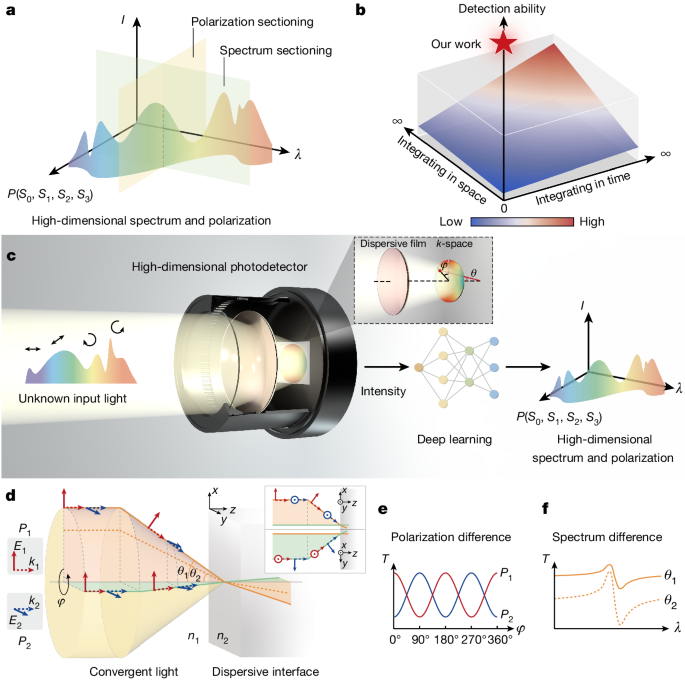Thin-Film Dispersion-Based Device for Simultaneous Measurement of Light Intensity, Polarization, and Spectrum
The article presents a novel approach for simultaneously characterizing the intensity, polarization, and spectrum of light using a simple thin-film interface. Conventional methods for polarimetry and spectrometry typically require complex integration of multiple polarization- and wavelength-sensitive elements, which can be bulky and alignment-sensitive.
The key innovation is the use of spatial and frequency dispersion in a thin-film structure to project the polarization and spectral information of the incident light into the wavevector domain. This allows the high-dimensional light information to be encoded into a single-shot image, which can then be deciphered using a deep residual neural network.
The authors demonstrate that their approach can fully characterize the arbitrary full-Stokes polarization states across a broadband spectrum with a single device and a single measurement. The performance is comparable or better than state-of-the-art single-purpose polarimeters and spectrometers, while offering a much more compact and alignment-free solution.
This work presents a significant advancement in high-dimensional photodetection and imaging, with potential applications in various fields, such as remote sensing, biomedical imaging, and optical communications.
Personalizar resumen
Reescribir con IA
Generar citas
Traducir fuente
A otro idioma
Generar mapa mental
del contenido fuente
Ver fuente
www.nature.com
Dispersion-assisted high-dimensional photodetector - Nature
Ideas clave extraídas de
by Yandong Fan,... a las www.nature.com 05-15-2024
https://www.nature.com/articles/s41586-024-07398-w
Consultas más profundas
